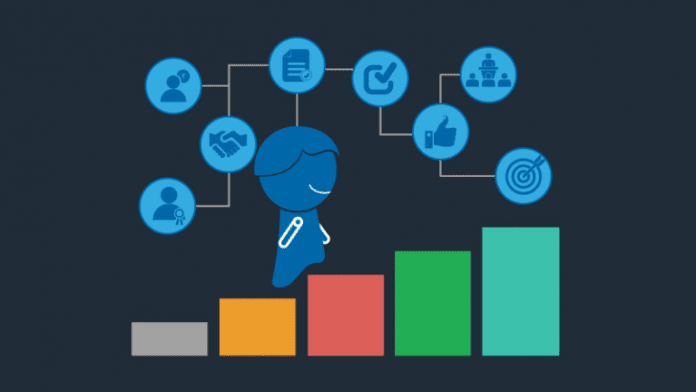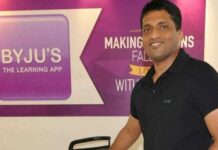“Information is no more a premium commodity, but Application of knowledge is”
Digitalization brought information at our finger tips, Automation reduced the quantum of mundane work, Descriptive, Predictive & Prescriptive Analytics already occupied their space in Decision Support Systems through processing the data and facts, Digitalization in globalization scenario brought varied customer expectations, increased competition among businesses and thereby complexity.
Leadership gained more focus than ever and is certainly a challenge where they (leaders) need to visualise, set goals, be instrumental in execution plan and to ensure results in right direction. Alongside, expectations from HR leaders also altered greatly.
People Management is much bigger challenge being aligning human resources with business objectives. All this needs processed information with right interpretation. Decision support systems need to be re-fabricated (with required parameters & indicators) efficiently.
Unless old methods redesigned to address contemporary challenges, effectiveness cannot be brought in. Since Business results are directly proportional to Employee performance, assessing employee performance has become more prominent, being it is the central nerve for all HR functions. Let’s take Performance Management for our discussion here.
Assessing employee’s performance has changed its gears many times. Bell Curve, 360 Degree appraisal, Balance Score Card methods have become obsolete. Many companies from different industries are looking for simple and effective methods of assessments. But, parameters & indicators of performance were always focused on Business Results.
Earlier, when an employee was unable to perform, then imparting knowledge through trainings was the primary solution after Performance Appraisal, without diagnosing the root cause for the underperformance.
Now, new generation employees are coming with lot of knowledge at their fingertips due to digitalization, still most of them are failing to reach the expectations’ mark. So, Knowledge is no more a challenge today. Reflecting the gained knowledge in the performance is the key issue, which needs to be addressed by the HR leader. Now HR Leader’s focus got shifted to Skill and Will issues which are complementary to each other.
Skill enables the individual to perform at expected level or more within the given timelines. The more you practice, the better skilled you are. In turn, production and productivity improves which will be beneficial for both Individual & Organisation. HR policies need to be redesigned to enable the discipline and to follow the correct procedure to improve the skill in any job.
Will is an individual’s internal environment where you believe that you can achieve what you desired to. Will to perform can be invoked through employee communication and feedback (part of employee engagement). Employee engagement can be better exercised through instantaneous feedback as they expected. New generations of work force are not ready to wait for the year end to get them appraised and to get feedback.
Performance Management has been transformed from Task oriented to Process Oriented to Result Oriented.Though there is a spotlight shift from assessing the performance of the employee to managing the performance, whole process of assessment to management is inevitable.
In the process of assessing and managing the performance of an employee, the focus and challenges of HR Leader:
- HR Leader should be capable of using and interpreting the analytics or decision support systems for the strategic HR decisions like proactive sourcing, employee engagement, compensation administration, retention planning etc.
- HR Leader should be capable of managing the workforce remotely, flexible work timings, different work cultures and socioeconomic situations, as much outsourcing is being done as a result of globalization.
- HR Leader should find new sources of getting information like Glassdoor, and social networking sites regarding employee satisfaction, work culture etc.
- Much of the routine jobs are automated, so human force need to be more creative, more analytical. Leaders must do skill gap analysis and State-of-the art trainings must be arranged time to time to grab the latest technology.
- Leaders must interact with employees constantly by giving feedback and positive and constructive criticism for the employee development.
- Employee experience is the critical aspect in retaining the talent since talent has multiple options outside which he can be valued and paid more and thereby attrition rate increases. There is a continuous talent acquisition war going on among companies, leader must do predictive analysis and implement the best HR engagement practices for retaining the best talent.
- Enabling immediate feedback mechanism everywhere across the organisation is a new challenge for HR Leaders.
3 Key dimensions that every HR Leader needs to look at when he/she thought about Performance Management System.
Efforts – All get initiated with efforts that every employee puts in his job. Efforts can be manifested through time and energy. ‘How much time he contributed and with what energy levels’ is the indicator.
Efficiency – Complete knowledge (through Job awareness), the level of proficiency he/she possesses (through practice) are the inherent indicators.
Effectiveness – Desired results obtained (in ‘time bound manner’) is the indicator.
Every Key Result Area (KRA) needs to be assessed in these 3 dimensions of Effort, Efficiency and Effectiveness. You may apply Rating method or grading method to bring the index for each dimension.
Efforts, Efficiency & Effectiveness are directly proportional to each other.
The more efforts + greater efficiency = higher results.
Scenario 1: If efforts index is at expected level, but effectiveness (Results) is low – Focus on efficiency (it might be skill issue)
Scenario 2: Efficiency index is good, but Results are low – Probably, more amount of efforts to put in (it might be will issue)
Scenario 3: Efforts & Efficiency indexes are at expected level, even if the results are low – Check with external factors (which are stopping the results)
For every job holder, a continuous feedback can be given for each work in this 3E model (Effort-Efficiency-Effectiveness)
Changing trends in PMS due to digitalisation:
- This trend of immediate feedback continues.
- Performance improvement plans will be instantaneous.
- Increments & promotions will be delinked with annual appraisal models.
- Efficiency index will throw healthy competition among employees.
- More Transparency can be experienced in this whole Performance Management System.
- Compensation & Benefits would be tightly aligned with results obtained.
- Experience would be a mere number of years and Efficiency will take place of experience.
Knowledge, Skills, & Will or Desire (KSW) put together competencies to perform any task. Effort, efficiency & effectiveness are the dimensions of performance assessment of any task. HR Leaders’ success mainly depends on how efforts and efficiencies transform into effectiveness (Business Results) and ultimately aligning the workforce objectives to business objectives.
 Author- Ram R Akella is a HR thought leader, HR Practitioner, HR Skills Trainer, Author and Blogger. He is having more than 16 years of experience in HR Space. Ram is the Founder & CEO of NRich HCM Solutions Pvt Ltd., A new age entrepreneur started his own HR Services Consulting firm in 2016. Started a free service called ‘HR Help Desk’ for HR fraternity to share his knowledge and experience. His passions are People Management, Philosophy & Photography
Author- Ram R Akella is a HR thought leader, HR Practitioner, HR Skills Trainer, Author and Blogger. He is having more than 16 years of experience in HR Space. Ram is the Founder & CEO of NRich HCM Solutions Pvt Ltd., A new age entrepreneur started his own HR Services Consulting firm in 2016. Started a free service called ‘HR Help Desk’ for HR fraternity to share his knowledge and experience. His passions are People Management, Philosophy & Photography









